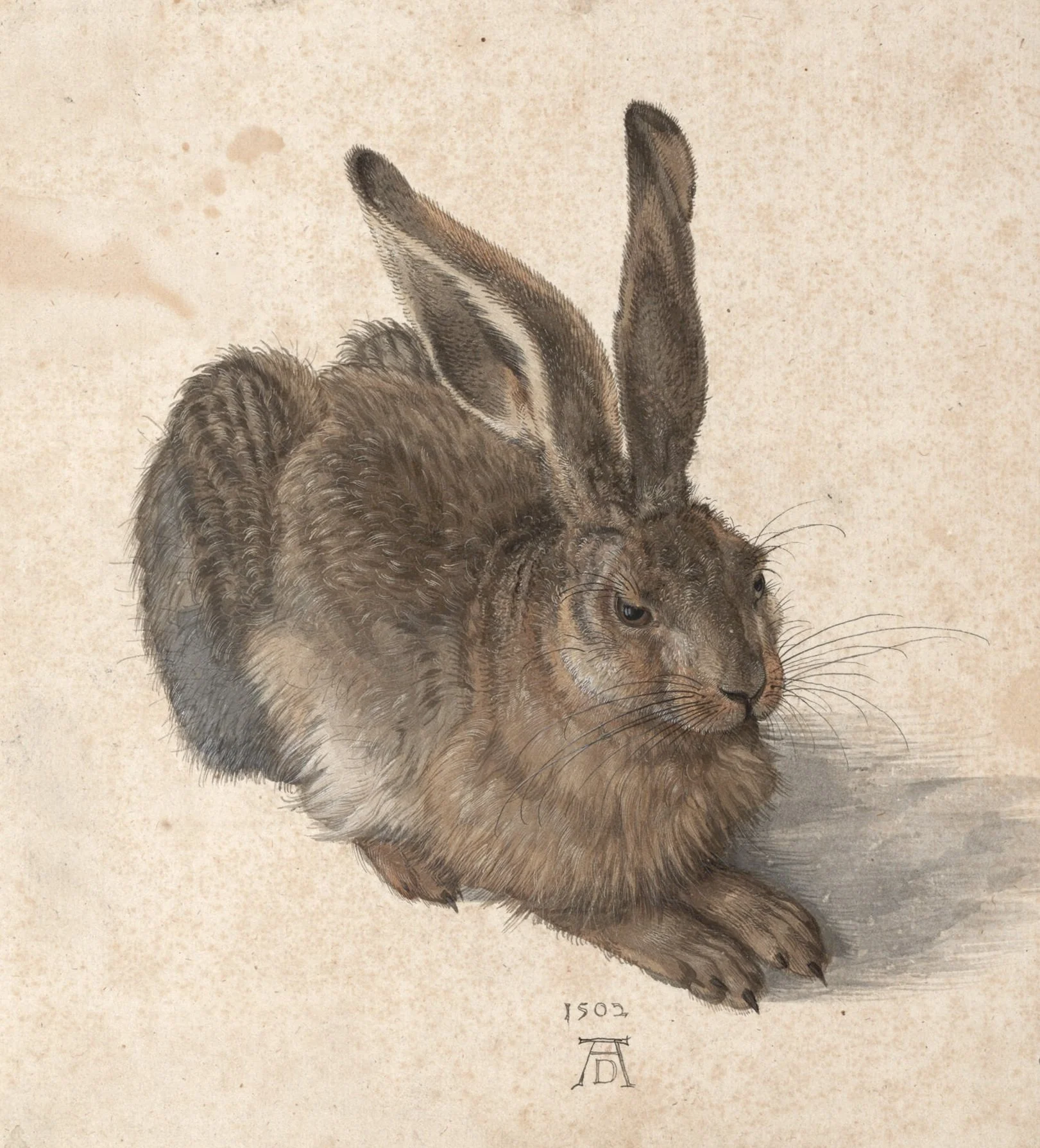PRINTED MATTER/ MUSEUMS’ SERIES
Albrecht Dürer: Hare, courtesy Albertina.
Albrecht Dürer's (1471-1528) watercolour painting Hare, known from countless reproductions and not least from the covers of many school sketchbooks, was signed by the master from Nuremberg himself with the famous monogram AD and the date 1502.
What makes the Hare, which has been in the Albertina's possession for centuries, so popular? Generations of art historians have described the ‘touching gentleness of the crouching animal’. Indeed, the hare's gaze initially suggests this, and the illusionistic effect of Dürer's painting style allows the viewer to almost physically feel the soft fur and delicate bone structure of the hare.
The Hare is also one of the earliest examples of an artistic attitude that considers the everyday, a lowly animal such as the hare – rather than the lion, which symbolises power and strength – worthy of being depicted. With the Hare, Dürer created something revolutionary: an unbiased and scientifically accurate representation of nature, which requires the artist to maintain a great, scientific distance from the subject of his observation. At the same time, Albrecht Dürer had, as it were, imbued the hare with compassion. Dürer's hare is not a still life or a dead thing, but a living creature of flesh and blood. In works such as this, Dürer once again transcends the Middle Ages and proves himself to be a pioneer of humanism, of the modern Renaissance.
Every single hair of the hare seems to be precisely reproduced. Only on closer inspection does one notice the astonishing economy of means with which Albrecht Dürer painted the hare, how simply and clearly the animal's body is defined with broad brushstrokes and individual hairs were applied with a pointed brush.
The lifelike preparation of animal specimens was not yet possible in Dürer's time. It is therefore likely that Albrecht Dürer painted the hare in his study from a live model, as evidenced by the animal's calm sitting posture with its head raised and ears pricked up. A mysterious detail that most viewers do not notice: the window of Dürer's studio is reflected in the animal's pupil.
No fewer than a dozen copies of Albrecht Dürer's Hare exist from the last third of the 16th century. There has never been any doubt about the authenticity of the Albertina's Dürer hare. The artwork's journey can be traced back to the master's workshop in Nuremberg. After Albrecht Dürer's death, the Hare entered the collection of the merchant and Dürer collector, Willibald Imhoff. Emperor Rudolf II acquired the painting from Imhoff's heirs in 1588 and brought it to Prague. After Rudolf II's death, the Hare was first kept in the Vienna Kunstkammer and finally in the Treasury. In 1796, Emperor Franz II gave the painting to the founder of the Albertina, Albert Duke of Saxony-Teschen, for his already famous collection.
Dr. Ralph Gleis, Director General of the ALBERTINA Museum

